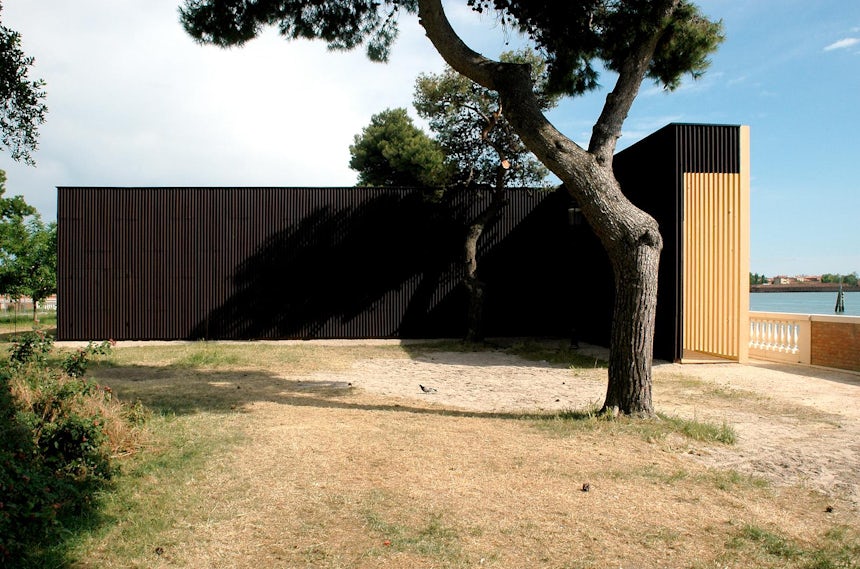Architizer is thrilled to announce that the 2026 A+Product Awards is officially open for submissions! Get your products in front of the AEC industry’s most renowned designers by submitting today.
British architect David Adjaye grew up collecting vinyl records and DJing in his youth, first delving into jazz fusion, then electronic music and finally conceptual music. As the story goes, over the years his younger brother Peter listened to his records and then worked as a DJ in clubs in his 20s after he received his degree in mathematical engineering. Eventually, Peter donned the name AJ Kwame and became a part of the scene that started the British electronic music movement.

The beautiful gatefold 180-gram vinyl features a hand-drawn image of a sound journey on the cover by David Adjaye.Photo courtesy of David Adjaye and Peter Adjaye; “Dialogues,” released by The Vinyl Factory, 2016
The result? A brotherly collaboration released this month in the form of a limited-edition vinyl album with 10 tracks. Each track on “Dialogues,” produced by The Vinyl Factory and Music for Architecture, features one of David’s built projects. Using architecture as a narrative, Adjaye’s brother turns his buildings into beats, transcending mere visual experience in the form of an audiovisual, multi-sensory soundscape. Composed over the past 15 years, their sonic collaborations include projects from around the world, from the Genesis Pavilion — created for Design Miami 2011 — to Oslo’s Nobel Peace Centre.

“What Peter does is ‘sound architecture,’” explains David Adjaye. “I give Peter a project and ask him to react. Architecture is a narrative. This project is like a DNA experiment. There’s a construction.”Photo courtesy of David Adjaye and Peter Adjaye; “Dialogues,” released by The Vinyl Factory, 2016
Beyond reviewing the creative relationship between David and Peter, the project examines the concept of experiencing space through all of the senses. The album investigates the profound link between the human experience of the built environment and musical association and affect. This connection has been explored and commented on, from medieval architects through to Renaissance designers throughout history. “Dialogues” looks to reestablish and propagate this link between the two disciplines.
Because each track is a direct response to one of David’s buildings, Peter supplied detailed written statements that accompany each track. As a sneak peek, check out a few of the tracks explored in a bit more depth below:


Photos via Olafur Eliasson
“Chromatic Fantasy” was composed for Your Black Horizon, a pavilion that houses a light installation by Danish-Icelandic artist Olafur Eliasson. The four-minute auditory interpretation was inspired by the thin horizontal neon light that runs around the black space as the primary light source. Originally presented at the Venice Biennale in 2005, the structure itself is windowless with a slatted façade.
Inside, a horizontal illumination looms across the 400-square-foot space, constantly rotating through a spectrum of colors. Reflecting upon the constant fluctuation of color, Peter responded with a gritty solitary cello song, “which performs a musical sequence with chromatic patterns that is a response to the refraction of light. As it resonates and is echoed in space, it takes you on a journey from the light to the dark to the light once again.”

Photo via Adjaye Associates

Photo via Design Indaba
The track “Reflections of a Golden Dream” was written for the Stephen Lawrence Centre, built in memory of the architecture student who was murdered in a racially motivated attack while waiting for a bus. Nearly five minutes long, the song’s overtones reverberate the somber and historic narrative of Stephen Lawrence with an intense composition that “envelops you in a dramatic score of melancholy.” Conversely, the undertones were inspired by the aesthetic and structural qualities of the building.
Clad in shimmering aluminum panels that were inspired by the light responsive quality of the foliage in the adjacent park, Peter used strings, synthetic drones and percussion to evoke “luxuriousness that is a reflection of the deep vibrancy of the color shades of deep pinks, greens to purples.” Calling attention to the large glass ground panes adorned with patterns created by artist Chris Ofili, the sonic dialogue refers to the patterned dancing shadows cast throughout the space: “You can hear the sound of the glass panes represented by the subtle percussion throughout.”
For your hearing pleasure, the complete track list is available to be streamed for a limited time at musicforarchitecture.com.
Architizer is thrilled to announce that the 2026 A+Product Awards is officially open for submissions! Get your products in front of the AEC industry’s most renowned designers by submitting today.




